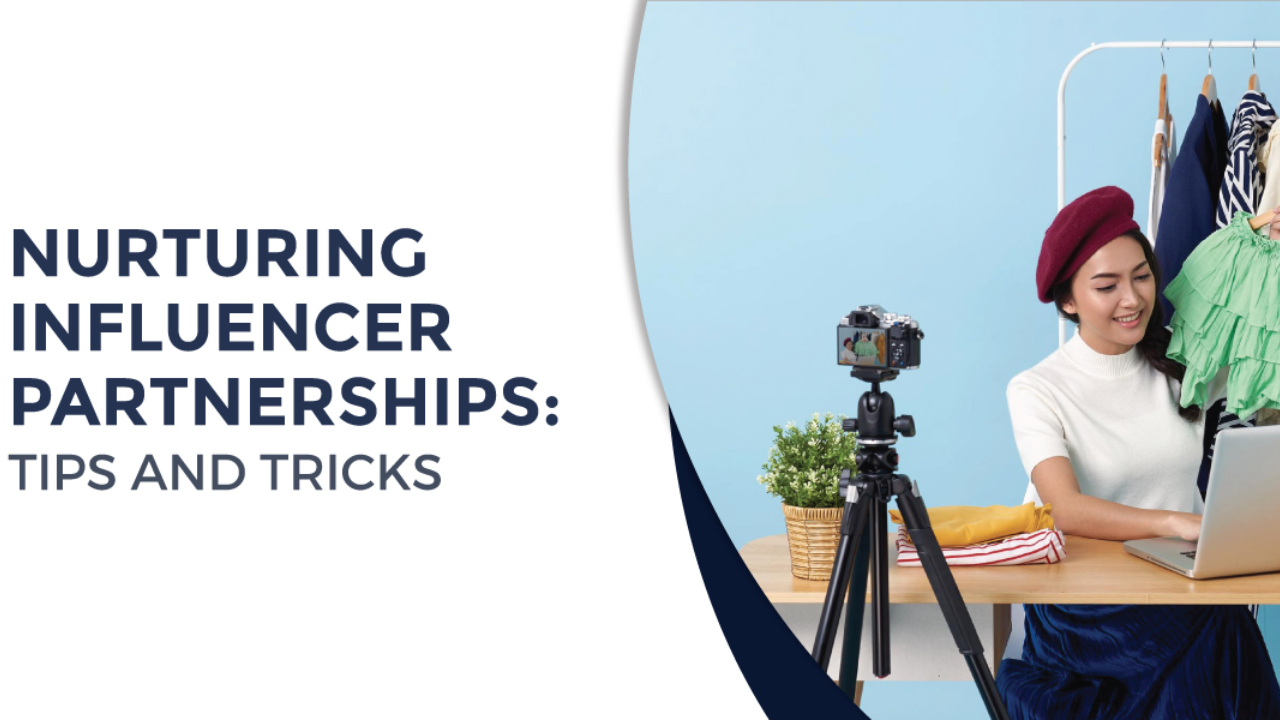In today’s digital marketing landscape, influencers have become powerful allies for brands seeking to expand their reach and connect with target audiences. However, successful influencer marketing goes beyond one-off collaborations. Building and maintaining long-term influencer partnerships is crucial for sustained impact and authenticity. This blog post explores the best practices for establishing and nurturing influencer relationships that benefit both your brand and the influencers you work with.
1. Choosing the Right Influencers
The foundation of any successful influencer partnership is choosing the right influencers to represent your brand. This selection process should go beyond follower count and focus on alignment with your brand values, audience demographics, and the influencer’s engagement rate.
- Audience alignment: Ensure the influencer’s audience matches your target market. Analyze their follower demographics, such as age, location, and interests, to determine if there’s a good fit.
- Content relevance: Look at the type of content the influencer creates. Their style, tone, and themes should align with your brand’s image and messaging.
- Engagement over reach: An influencer with a smaller, highly engaged audience can be more effective than one with a large, passive following. Evaluate the influencer’s engagement rate to gauge the level of connection they have with their audience.
Example: A sustainable fashion brand might partner with an eco-conscious influencer who regularly shares content about ethical fashion, aligning perfectly with the brand’s values.
2. Fostering Authentic Relationships
Building authentic relationships with influencers is key to long-term success. Influencers are more likely to promote your brand enthusiastically and genuinely if they feel valued and respected.

- Personalized communication: When reaching out to influencers, personalize your messages. Show that you’ve done your research and understand their content and audience.
- Value exchange: Successful partnerships are mutually beneficial. Ensure that your collaboration offers value to the influencer, whether it’s through fair compensation, exclusive access, or opportunities for growth.
- Long-term collaborations: Consider building ongoing partnerships rather than one-time campaigns. Long-term collaborations create a deeper connection between the influencer and your brand, leading to more authentic endorsements.
Example: A beauty brand might collaborate with an influencer over several months, providing them with new product launches, access to brand events, and opportunities to co-create content.
3. Setting Clear Expectations and Goals
Clear communication is essential in influencer partnerships. Both parties should have a shared understanding of the goals, deliverables, and expectations from the collaboration.
- Detailed briefs: Provide the influencer with a comprehensive brief that outlines the campaign objectives, key messages, content guidelines, and deadlines. This ensures the content aligns with your brand’s goals.
- Creative freedom: While it’s important to provide guidance, allowing influencers creative freedom helps maintain the authenticity of their content. Trust their expertise in engaging their audience.
- Performance metrics: Define how success will be measured. Whether it’s through engagement, clicks, or conversions, having clear metrics helps both parties understand the impact of the partnership.
Example: A tech company working with a tech influencer might outline the key features they want to highlight but allow the influencer to decide the best way to present the information in their unique style.
4. Maintaining Relationships Post-Campaign
The end of a campaign shouldn’t mark the end of the relationship. Keeping in touch with influencers after a collaboration is crucial for building long-term partnerships.
- Follow-up communication: Send a thank-you message after the campaign concludes, acknowledging their effort and sharing any initial results or feedback.
- Continued engagement: Engage with the influencer’s content on social media by liking, commenting, and sharing. This shows your ongoing interest and support for their work.
- Future opportunities: Keep them in mind for future collaborations or brand initiatives. Regularly touch base to explore new ways to work together.
Example: After a successful campaign, a fitness brand might send a personalized gift to the influencer as a token of appreciation, along with a note about potential future collaborations.
5. Maximizing the Impact of Influencer Partnerships
To fully capitalize on influencer collaborations, consider ways to amplify the content and extend the partnership’s reach.
- Content repurposing: With the influencer’s permission, repurpose their content for use across your own marketing channels, such as your website, email newsletters, or social media.
- Cross-promotion: Collaborate on cross-promotion efforts, where both the brand and influencer share the content across their respective platforms, increasing visibility.
- Case studies: If the campaign was particularly successful, consider creating a case study that highlights the results. This not only showcases the partnership but also serves as a valuable marketing asset.
Example: A travel brand might repurpose an influencer’s stunning travel photos in their upcoming digital ad campaign, showcasing real-life experiences of their destinations.
Conclusion
Influencer relations are an essential component of modern marketing strategies. By carefully selecting influencers, fostering authentic relationships, setting clear expectations, maintaining connections post-campaign, and maximizing the impact of collaborations, brands can build long-lasting partnerships that drive meaningful results.
In today’s competitive landscape, successful influencer marketing is about more than just a single post—it’s about building genuine connections that resonate with audiences and create lasting value for both the brand and the influencer.




